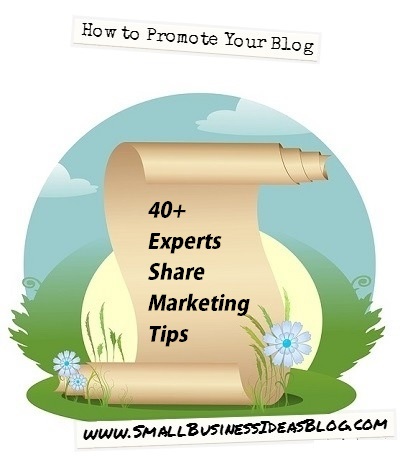 To be efficient with content marketing, you need to pick the right tools. There are many tools that can you can use to help with content creation, promotion and management.
To be efficient with content marketing, you need to pick the right tools. There are many tools that can you can use to help with content creation, promotion and management.
Selecting the right tools can make your job a lot easier, so it’s worth spending some time planning out which tools you want to use for your content marketing. Here’s a quick overview of some popular tools that people are using today.
Content Marketing Platforms
Conversion Optimization
Project Management
Email Marketing
Social Media
SEO
Content Marketing Platforms
Most people just use WordPress for blogging, but integrating a content marketing platform can be helpful. Content marketing software can streamline your inbound marketing efforts by providing all or most of the tools you need in one place.
Hubspot – Hubspot is the leader in inbound marketing software and also invests heavily in their own content marketing.
You can integrate Hubspot into your existing WordPress blog or you can use the fully hosted version of Hubspot to host your blog and website. Hubspot integrates blogging, email marketing, analytics, SEO, social media and other features into one software.
If you are looking for a comparison of inbound marketing software solutions, then check out these posts:
http://www.thesaleslion.com/marketo-vs-eloqua-pardot-review-compare
Spokal – Another inbound marketing software that conveniently integrates into WordPress is Spokal. Spokal provides various features including keyword research, A/B split testing for your blog titles, scheduled social sharing and various other features.
Conversion Optimization
Getting traffic to your website is not enough. To be effective with content marketing, you also want to focus on conversion optimization, i.e., converting your website traffic into email subscribers and sales.
Split testing different layouts or offers and using analytics data to study your website visitors are some of the fastest and easiest ways to increase your sales. Here are a few popular conversion optimization tools.
1. Sumo – Sumo offers a suite of features to content marketers and bloggers to help them get more leads from their website traffic. Some features include social sharing buttons, email opt-in boxes that increase email subscribers and heat maps.
2. Optimizely – There are a good number of platforms designed to make split testing easy and optimizely is one of the more popular ones. Optimizely makes it easy to test out different ideas and get real data on which ones perform the best without having to code.
They offer a free starter plan as well as an enterprise plan that has more features.
3. Unbounce – Unbounce is a conversion solution for marketers that offers some nice pre-built mobile optimized landing page templates. No HTML or coding knowledge is required, making it easy for just about anyone to build, publish and test a landing page.
Pricing starts at $49 / month, but they also offer a free trial.
If you want to learn more about conversion rate optimization, then check out some of these resources:
17 Resources to Help You Learn and Master CRO – http://sujanpatel.com/marketing/conversion-rate-optimization
Conversion Optimization Best Practices – https://vwo.com/blog/conversion-optimization-best-practices
Beginner’s Guide to CRO – https://qualaroo.com/beginners-guide-to-cro
Email Marketing
While content creation and promotion can generate more traffic to your site, you should also invest in email marketing to keep in touch with your prospect and nurture leads. In fact, most content marketers focus heavily on getting people to sign up for their email newsletters.
Mailchimp – One of the most popular email marketing solutions is Mailchimp because it is free for up to 2,000 subscribers. Asides from being free, Mailchimp was designed to be easy to use.
This email list management tool is a good solution for new bloggers and other businesses that are just getting started in content marketing. It also provides useful data like how many people read your email or clicked links in it.
Lead Pages – One solution that is designed to get more leads is Lead Pages. Lead Pages offers many pre-built and tested templates that have been proven to maximize email sign ups. You can create landing pages in minutes without coding starting at $25 / month.
Their more advanced plans include A/B testing, the ability to upload your own custom templates and even professional coaching.
Infusionsoft – Infusionsoft is an advanced CRM that integrates with your website for streamlined content marketing. You can keep track of your contacts and leads, automate email follow ups and sell products and services online.
Infusionsoft starts at around $200 per month, so it may be pricey for solopreneurs, but is affordable for businesses that are already generating revenue and looking to scale.
Drip – Drip is a lightweight email marketing and automation system that is designed to provide advanced email marketing features at a lower cost. It is also created with usability and ease of use in mind.
Optin Monster – Another commonly used lead generation plugin worth mentioning is Optin Monster. This plugin is specifically designed for WordPress and allows marketers to capture emails with various email opt-in boxes, including pop-ups, slide ins, after post widgets and more.
Optin Monster also provides split testing so that you can test different email boxes against each other to see what works better, analytics and even some animation features to make your email boxes more noticeable to visitors.
Project Management
When scaling content production and promotion, proper project management is crucial. There are many project management systems that you can choose from, but here are a few that are worth looking at.
CoSchedule – CoSchedule was designed to help editors manage their content marketing calendar. CoSchedule allows you to plan content creation and schedule social media sharing in one calendar.
Active Collab – Active Collab is a project management system that has a one time purchase price option. If you are looking for a general project management tool without a recurring monthly cost, then installing the self hosted version of Active Collab might be a good choice for you.
Trello – Trello is another software that you can use to collaborate with your team. The free version allows you to create “cards” that your team can view and share with other team members. This provides a simple and intuitive way to keep track of tasks among your team members.
Social Media
Promoting your content through social media is another important activity. Luckily, there are several useful tools that you can use to manage your social media marketing.
Buzzsumo – Buzzsumo is a powerful tool that allows you to enter keywords and see the most shared content for those keywords. It also displays who shared the post and you can even export the data.
With their paid plans, you can get content alerts and more in depth content analysis. Their agency and enterprise plans even offer API access.
Buffer – Buffer is an easy to use social media scheduling tool that you can use to schedule tweets with the click of a button. Simply install the browser add-on and connect it to your Twitter account and you can fill up your Twitter feed with content to share throughout the day.
Scheduling content prevents your followers from getting overwhelmed with too many updates at once and allows you to reach more people throughout the day.
Hootsuite – Hootsuite offers a similar service to Buffer and allows you to schedule social media posts throughout the day. Their free plan allows you to manage up to 3 social profiles, but with their paid plans, you can add more profiles and have other team members manage your social media.
Mention – Mention is a useful tool to get email alerts whenever someone mentions you on your blog or social media. You can also set up mentions for keywords or competitors to see where they are getting mentioned.
Social Media tools directory – There are tons of social media tools out there. Ian Cleary from Razor Social created a searchable social media tools directory here where you can find a variety of tools including image creation tools, platform specific apps and more.
SEO
Finally, if you are creating website content, then optimizing your content for search engine traffic is important. Search engines can send you ongoing traffic, even after your articles are published.
As you create more content, you can get increasingly more traffic from the search engines. Here are some tools that you may want to look into for SEO:
Keyword research tools post – Keyword research is still important and although Google’s tools only reveal some data, there are lots of other ways to get the keyword information that you need. In this post, I created a list of over 90 keyword research tools and ideas.
Scrapebox – One of my favorite tools for SEO is Scrapebox, which is a great deal for a one time cost of under $100. It uses the Moz API and with this tool, you can find out who linked to similar blog posts and get social share counts for web pages.
SEM Rush – If you’re looking for a more advance SEO tool, then check out SEM Rush. This tool provides keyword research, competitive analysis data, position tracking, ad data and more.






